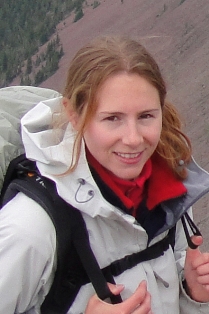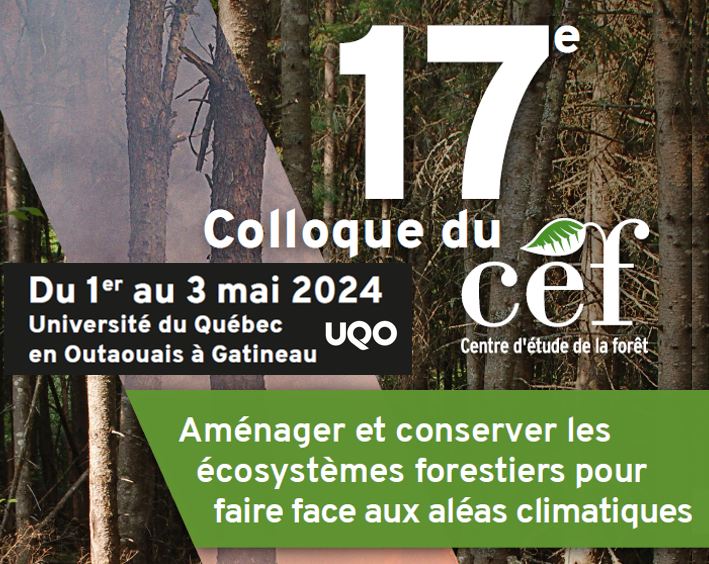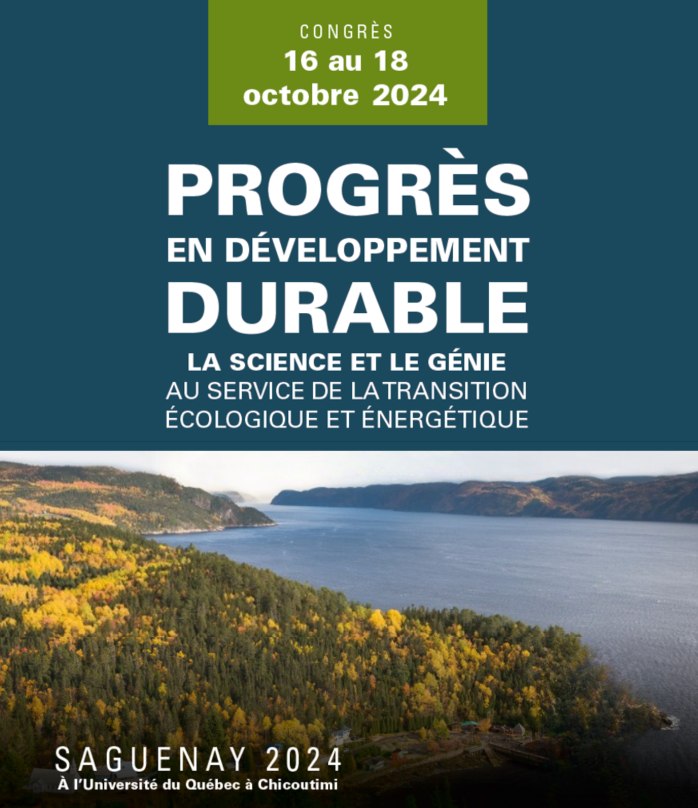
Ophélie Planckaert (former member)
M.Sc. in Animal Ecology and Forestry, B.Eng. in Agriculture and Natural Resources Management
NOTE: This page is not maintained anymore.
To consult my updated profile, please go on LinkedIn ![]() .
.
Master's research |
Education |
Experience |
Communication
Master's research
Resistance to movements of American marten in a boreal forest
Adviser : André Desrochers
Habitat use may result from the combined effects of perceived quality and access. The latter may be inferred from landscape composition and pattern, but is best measured from spatially-explicit modeling. However, spatially-explicit movement models require known movement costs for each particular patch type, and such costs have rarely been estimated empirically. We compared various landscape ‘cost scenarios’ to explain the use of boreal forest patches by wintering American Marten (Martes americana). Every winter from 2004 to 2008, marten tracks were located by GPS at the Montmorency Research Forest, 70 km north of Québec City, Canada. Hypothetical cost scenarios differed by how much moving through open areas (age 0-10 y), open edges and young forests (age 11-30 y) cost relative to closed forest. With a Geographical Information System, ‘least-cost’ paths were generated across the study area, according to each cost scenario. Points where simulated paths met transects were used as simulated tracks. Nearest-neighbour distances between them and real marten positions were used to assess simulation performance.
In 63,5 % of cases, resistance scenarios performed better than corresponding null models (equal resistance in all habitats), suggesting that mosaic structure of our study area did limit movements of American martens. Adding intermediate movement values for young forests increased simulation performance, suggesting that movement resistance in young stands was higher than in mature forest. Simulations with a pixel size of 100 m performed significantly better than simulations with pixel sizes of 5, 25 or 300m, suggesting that marten uses large patches of mature forest and that it is sensitive to connectivity of suitable habitats. Model performance was higher when hypothetical movement cost in open areas were less than 20 times higher than in mature forest. Thus, the Montmorency Forest might not be heterogeneous enough in terms of habitat types and configuration to allow me to evaluate precisely relative movement resistance in open areas compared to mature forests. Studying movements with snow-tracking data appears promising, and may yield useful results in highly fragmented landscapes.
Education
- Master Degree in Animal Ecology and Forestry, Laval University (Canada), 2009
- Forest Management and Biology Education, Laval University (Canada), 2006-2007
- Engineer Degree in Agriculture and Natural Resources Management, ENITAC (France), 2006
- Intensive Courses in Science ("Classes préparatoires"), Châtelet (France), 2001-2003
Experience
- Research manager in bat conservation, Groupe Chiropteres de Provence (France), 2010-2012
- Social Work Assistant in an Indigenous Community in the Amazonian Jungle, San Martin de Amacayacu (Columbia), 2008-2009
- Field Assistant for Capture-mark on Small Mammals, Montmorency Forest (Canada), 2008
- Instructor, Wildlife Management , Laval University (Canada), 2008
- Teaching Assistant, Tree Physiology, Laval University (Canada), 2008
- Snow-tracking, Montmorency Forest (Canada), 2007-2008
- Teaching Assistant, Geographic Information Systems, Laval University (Canada), 2007
- Teaching Assistant, Wildlife Management, Laval University (Canada), 2007
- Field Assistant for Capture-mark on Birds, Montmorency Forest (Canada), 2007
- Field Assistant in Biochemistry, Waikato University (New-Zealand), 2006
- Field Assistant for Photoidentification of Humpback Whales, Southern Cross University (Australia), 2005
- Fish Processing Technician, Hand-Made Fish Company (Scotland), 2004
- Volunteer in a wildlife protection center, Luberon (France), 2004
- Mathematics, Physics and Chemistry Student Tutor (Canada and France), 2003-2009
- Agricultural Technician in a Sheep Farm, Espezel (France), 2003-2004
Communication
Main reports and publications
- Planckaert, O. and A. Desrochers. 2012. Modelling marten (Martes americana) movement costs in a boreal forest: effects of grain size and thematic resolution. International Journal of Ecology. Vol. 2012. 10 p. Read the paper

- Planckaert, O. 2009. Évaluation des coûts de déplacement de la marte d'Amérique dans une sapinière boréale aménagée. Master's thesis, Laval University, Québec, Canada. 57 p.
- Planckaert, O. 2007. La sélection de l'habitat par la martre d'Amérique en forêt boréale aménagée: application de la méthode de calcul des distances. Degree's thesis, ENITAC, Clermont-Ferrand, France. 47 p.
Oral presentations
- Planckaert, O. Corridors de vol et franchissement des routes par le Grand rhinolophe. SFEPM, 14èmes Rencontres nationales "chauves-souris" (March 2-4, 2012), Bourges, France.
- Planckaert, O. and D. Quekenborn. Les grands rhinolophes et murins à oreilles échancrées en Camargue: déplacement et exploitation des ressources. PNR de Camargue et SMGG, 7èmes Rencontres Chiroptères Grand Sud (November 5-6, 2011), Sanilhac-Sagriès, France.
- Planckaert, O. Greater and Lesser horseshoe bats facing building and road construction. Hufiland, Experiences of dealing with Horseshoe Bats in the course of road construction and demolition of buildings (March 26-27, 2011), Neudietendorf, Allemagne.
- Planckaert, O. Chiroptères et infrastructures de transport terrestres. Cas de la région PACA. SETRA and CETE, Impact des infrastructures de transport terrestres sur les chiroptères (December 14, 2010), Bourges, France.
- Planckaert, O. and Desrochers, A. Évaluation des coûts de déplacement de la martre d'Amérique. Société Québécoise pour l'Étude Biologique du Comportement, 33ème congrès annuel de la SQEBC (October 31 and November 1-2, 2008), Rimouski, Canada.
- Planckaert, O. and Desrochers, A. Evaluation of movement costs for American marten. International Society for Behavioral Ecology, the 12th Congress of the ISBE (August 9-15, 2008), Ithaca, USA.












